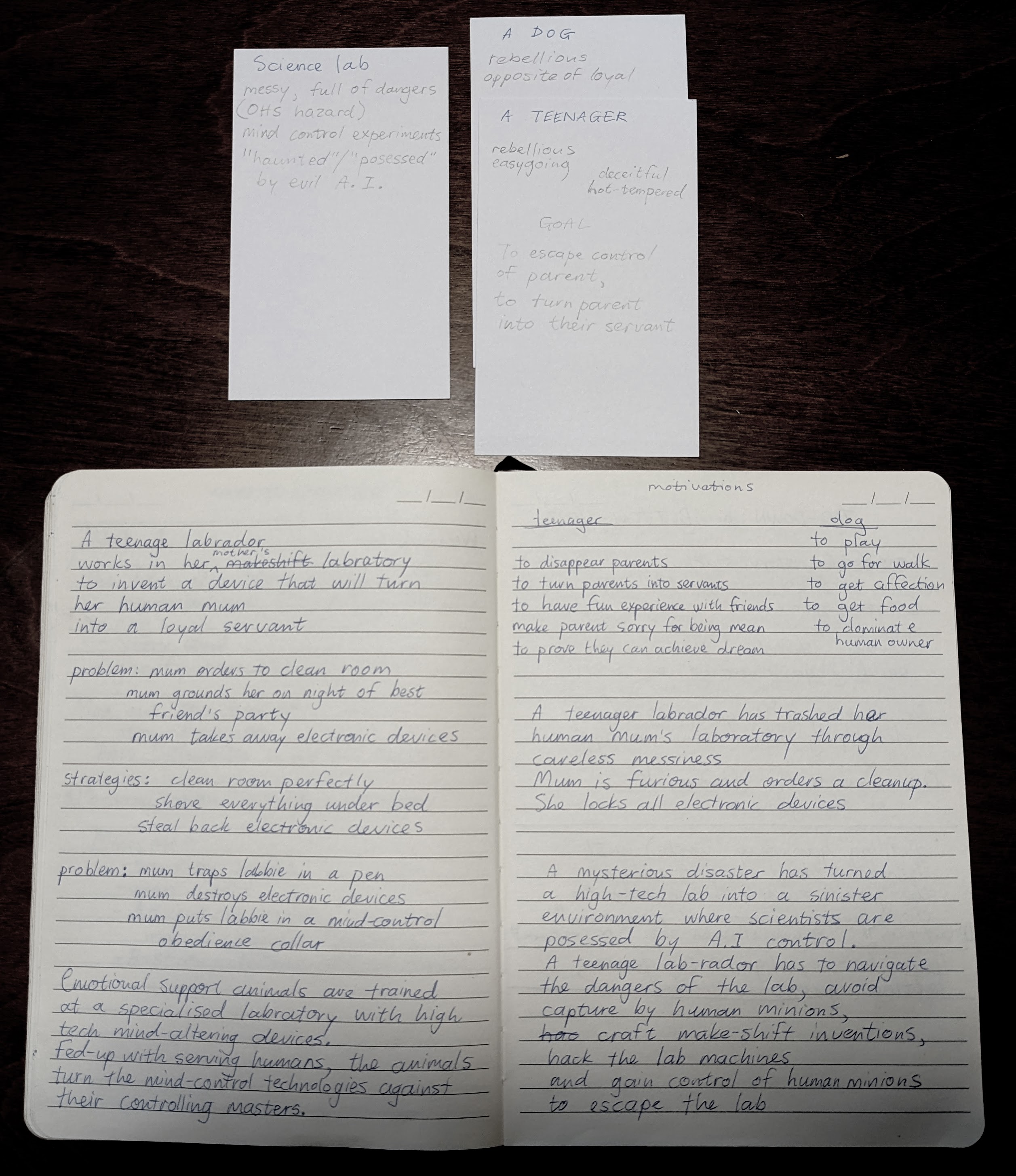
Animated Narratives - Week 1
This week I was considering how narratives function in games specifically. What makes game narratives unique and different from screen stories? I looked for ideas in the book The Art of Game Design (2020) by Jesse Schell. Schell discusses the idea of a “story machine”: the idea that a game can generate stories through interaction. Some games tell a story as a “string of pearls”- which is more linear, where a game leads you on a set path from major event to major event of the story, strung together with sequences of gameplay. On the other hand, some games can be open with possibilities, for example Minecraft. Considering the idea of the story machine, I am thinking about how many players of this game creates many different kinds of stories through their playing of the game. Schell also mentions that when a player can personalise characters and worlds, they tend to care more about the story they are making.
With these ideas in mind, I have been thinking a lot about simulation games and management games like Minecraft and Animal crossing, which provides a customisable environment and characters with many choices and possibilities for how players might encounter characters and events in the game. I have also considered role playing and interactive storytelling games, specifically the game “Kids on Bikes”. In Kids on Bikes, players start by brainstorming what the world is that the game will take place in, and they spend some time to build their characters before the game starts. This initial character- and world-building workshop provides all the story elements that gets worked into the storytelling as the game gets played.
I was working to make a kind of game for myself that could be used as a story generator. I wanted to work in a rough paper prototype form. Instead of focusing on one story idea, I was making lists of possible worlds, characters and main story problems. My idea is that it could be used like playing a card game, where random cards gets selected and then it creates a structure and elements for a story to be improvised.
I used blank index cards and labelled them with many ideas for characters, so that this could be a “character”deck. I started by thinking of many categories for characters. Then I put some possibilities down on the cards that sprung from the categories.
In I was thinking that the characters need to be fleshed out, so to give it personality traits, strengths and weaknesses, similar to how a character might be built for an interactive storytelling game or RPG. So I made more lists of possible personality types, possible strengths, possible weaknesses.
Of course the character needs to have a motivation/goal and overarching problem as the main conflict. I started with Maslow's Hierarchy of needs and tried to create a list of possible motivations based on universal human needs.
Before the game starts:
Randomly selected:
Draw a character card
Draw a world card
Chosen from list (or made up), write with pencil on character card and world card:
Choose a personality type for your character (choose from list or make it up)
Choose a strength and a weakness for your character (choose from list or make it up)
Describe specific world conditions (environment conditions, inhabitants, etc.)
Write on a blank card (choose from list or make it up):
Choose a specific motivation+problem for character in the chosen world
Playing the game could be with a few people, functioning as an interactive storytelling. The world can be fleshed out collaboratively as the story unfolds, the characters could be provided problems to overcome, deciding on strategies to solve them, as they try to achieve their overarching goal.
Downloads:
-
Download File: pxl-20220315-002452738.jpg
Download File: pxl-20220315-002440020.jpg
Download File: pxl-20220315-002500484.jpg
Download File: pxl-20220315-002415001.jpg
Download File: pxl-20220320-054815867.jpg
Download File: pxl-20220320-074823094.jpg
Download File: pxl-20220322-052109062.jpg
Download File: pxl-20220315-002425582.jpg
About This Work
By Louis Fourie
Email Louis Fourie
Published On: 22/03/2022
